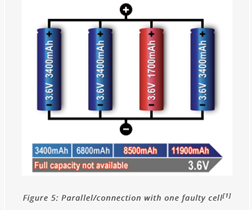Hi, TI support team
I have received inquiries about the battery pack protection circuit applied to tablets from our customers.
[Battery]
- 10000mAh * 2 (parallel connection)
- 10000mAh * 3 (parallel connection)
Q1. Should batteries connected in parallel have a protection circuit (PCM) applied to each cell?
Or should the protection circuit for the entire connected battery be applied?
(If you have a product that meets the above battery specifications, please let us know.)
Q2. If connected in parallel, should I use a cell balacing IC?
(If you have a product that meets the above battery specifications, please let us know.)
Thanks.
Regards,
MJ




